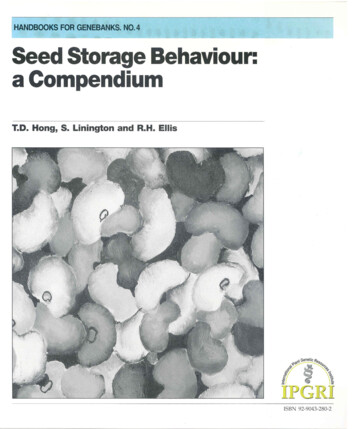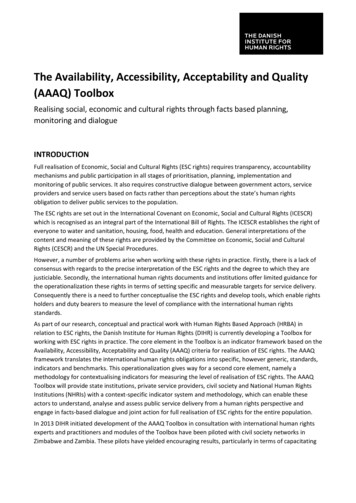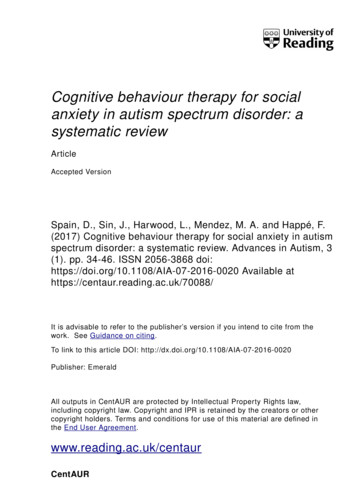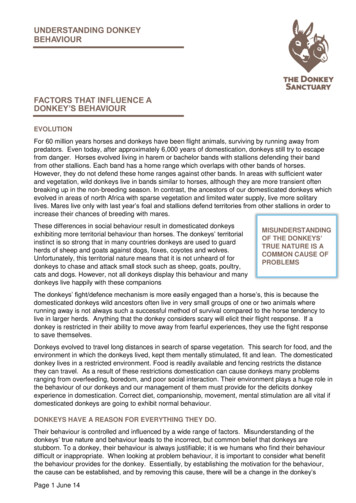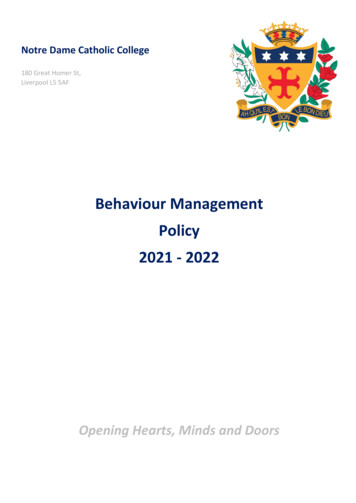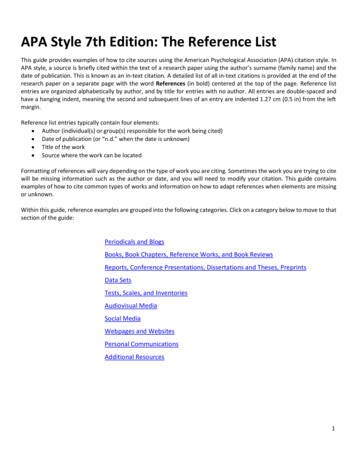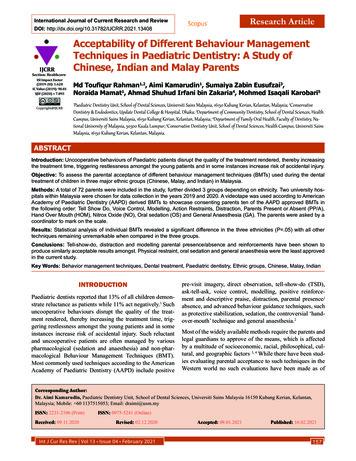
Transcription
Research ArticleInternational Journal of Current Research and ReviewDOI: ction: HealthcareISI Impact Factor(2019-20): 1.628IC Value (2019): 90.81SJIF (2020) 7.893Copyright@IJCRRAcceptability of Different Behaviour ManagementTechniques in Paediatric Dentistry: A Study ofChinese, Indian and Malay ParentsMd Toufiqur Rahman1,2, Aimi Kamarudin1, Sumaiya Zabin Eusufzai3,Noraida Mamat1, Ahmad Shuhud Irfani bin Zakaria4, Mohmed Isaqali Karobari5Paediatric Dentistry Unit, School of Dental Sciences, Universiti Sains Malaysia, 16150 Kubang Kerian, Kelantan, Malaysia; 2ConservativeDentistry & Endodontics, Update Dental College & Hospital, Dhaka; 3Department of Community Dentistry, School of Dental Sciences, HealthCampus, Universiti Sains Malaysia, 16150 Kubang Kerian, Kelantan, Malaysia; 4Department of Family Oral Health, Faculty of Dentistry, National University of Malaysia, 50300 Kuala Lumpur; 5Conservative Dentistry Unit, School of Dental Sciences, Health Campus, Universiti SainsMalaysia, 16150 Kubang Kerian, Kelantan, Malaysia.1ABSTRACTIntroduction: Uncooperative behaviours of Paediatric patients disrupt the quality of the treatment rendered, thereby increasingthe treatment time, triggering restlessness amongst the young patients and in some instances increase risk of accidental injury.Objective: To assess the parental acceptance of different behaviour management techniques (BMTs) used during the dentaltreatment of children in three major ethnic groups (Chinese, Malay, and Indian) in Malaysia.Methods: A total of 72 parents were included in the study, further divided 3 groups depending on ethnicity. Two university hospitals within Malaysia were chosen for data collection in the years 2019 and 2020. A videotape was used according to AmericanAcademy of Paediatric Dentistry (AAPD) derived BMTs to showcase consenting parents ten of the AAPD approved BMTs inthe following order: Tell Show Do, Voice Control, Modelling, Action Restraints, Distraction, Parents Present or Absent (PP/A),Hand Over Mouth (HOM), Nitrox Oxide (NO), Oral sedation (OS) and General Anaesthesia (GA). The parents were asked by acoordinator to mark on the scale.Results: Statistical analysis of individual BMTs revealed a significant difference in the three ethnicities (P .05) with all othertechniques remaining unremarkable when compared in the three groups.Conclusions: Tell-show-do, distraction and modelling parental presence/absence and reinforcements have been shown toproduce similarly acceptable results amongst. Physical restraint, oral sedation and general anaesthesia were the least approvedin the current study.Key Words: Behavior management techniques, Dental treatment, Paediatric dentistry, Ethnic groups, Chinese, Malay, IndianINTRODUCTIONPaediatric dentists reported that 13% of all children demonstrate reluctance as patients while 11% act negatively.1 Suchuncooperative behaviours disrupt the quality of the treatment rendered, thereby increasing the treatment time, triggering restlessness amongst the young patients and in someinstances increase risk of accidental injury. Such reluctantand uncooperative patients are often managed by variouspharmacological (sedation and anaesthesia) and non-pharmacological Behaviour Management Techniques (BMT).Most commonly used techniques according to the AmericanAcademy of Paediatric Dentistry (AAPD) include positivepre-visit imagery, direct observation, tell-show-do (TSD),ask-tell-ask, voice control, modelling, positive reinforcement and descriptive praise, distraction, parental presence/absence, and advanced behaviour guidance techniques, suchas protective stabilization, sedation, the controversial ‘handover-mouth’ technique and general anaesthesia.2Most of the widely available methods require the parents andlegal guardians to approve of the means, which is affectedby a multitude of socioeconomic, racial, philosophical, cultural, and geographic factors. 3, 4 While there have been studies evaluating parental acceptance to such techniques in theWestern world no such evaluations have been made as ofCorresponding Author:Dr. Aimi Kamarudin, Paediatric Dentistry Unit, School of Dental Sciences, Universiti Sains Malaysia 16150 Kubang Kerian, Kelantan,Malaysia; Mobile: 60 1137515053; Email: draimi@usm.myISSN: 2231-2196 (Print)Received: 09.11.2020ISSN: 0975-5241 (Online)Revised: 02.12.2020Int J Cur Res Rev Vol 13 Issue 04 February 2021Accepted: 09.01.2021Published: 16.02.2021157
Rahman et al: Acceptability of different behaviour management techniques in paediatric dentistry: a study of chinese, indian and malay parentsnow within the Asian sphere. Therefore, the current studyaimed to evaluate the parental acceptance to various BMTswhen the study was subjected to three of the major ethnicgroups of Asia; Chinese, Indian and Malay. The null hypothesis was formulated that there will be no significant differences in parental acceptance of different BMTs when assessing the three ethnic groups.MATERIALS AND METHODSTwo university hospitals within Malaysia were chosen fordata collection in the years 2019 and 2020. Only parents ofthe three ethnicities educated in written and spoken Englishhave considered whose children were under the age of 18.Children with special disabilities were excluded. Seventytwo parents were conveniently considered with 22 in eachof the 3 groups. Ethical approval for the study was obtainedfrom Jawatankuasa Etika Penyelidikan Manusia (JEPeM) ofUSM (USM/JEPeM/19070410).A videotape was made according to AAPD derived BMTsto showcase consenting parents ten of the AAPD approvedBMTs in the following order: Tell-Show-Do (TSD), VoiceControl (VC), Modelling, Action Restraints, Distraction, Parents Present or Absent (PP/A), Hand Over Mouth(HOM), Nitrox Oxide (NO), Oral sedation (OS) and GeneralAnaesthesia (GA). The video was 10 minutes in duration,after which the parents were asked to express their level ofagreement to each method using a 100-point visual analoguescale (VAS). The left end of the scale read “completely acceptable” and the right end of the scale read “completelyunacceptable”. The parents were asked by a coordinator tomark on the scale.A statistical software (SPSS, IBM Corporation) was used toevaluate the normality and was followed by 1-way ANOVAto compare the mean of three independent groups and PostHoc Analysis (Bonferroni).RESULTSThe demographics of the parents have been described in Table 1. The rankings provided by the parents of each ethnicity have been demonstrated in Table 2. Statistical analysisof individual BMTs revealed a significant difference in thethree ethnicities (P .05) with all other techniques remainingunremarkable when compared in the three groups. Detailedoutcomes of each BMT has been described in Table 3.DISCUSSIONThe current study aimed to evaluate the different BMT acceptability levels within Chinese, Indian and Malay ethInt J Cur Res Rev Vol 13 Issue 04 February 2021nicities. Nine out of 10 BMTs demonstrated no significantdifferences in the amount of approval among the three ethnicities with only BMT modelling showing significant differences (P .05). Therefore, the null hypothesis was partlyrejected. This study found that all three ethnicities equallyapproved Tell-Show-Do, Audio Visual (distraction), Parental Absence/Presence and Modelling. However, there wasa significant difference (P .05) in the amount of approvalgiven to modelling when comparing Chinese and Indian ethnicities. While previous studies have shown modelling asan effective technique with either filmed modelling5 or livemodelling6,7 in the Western world, the current study presentscontradictory findings when comparing the attitudes of thetwo largest Asian ethnicities. Modelling and positive/negative reinforcements have had mixed results in the past withcertain authors preferring positive 8 while others commenting for negative3,9-11 attribute these possible disagreements tocultural differences12,13 argued that modelling is only effective when the child’s anxiety is controlled before the procedure and the child can be modelled at a relaxed state. However, this study was limited to evaluating Chinese parents ofMalaysia and the findings could be different if carried out inMainland China or India.While tell-show-do has presented the most popular BMT,similar to previous findings3,9, distraction was also a highly preferred technique. This disagrees with older studies 10which questioned the effectiveness of the technique. However, children nowadays are more attuned to mobile multimedia and therefore are more sensitive to visual distractiontechniques. The current findings agree with previous authorsin terms of general acceptability of voice command 14and thewidespread disapproval of general anaesthesia in the Asianculture.15 The ‘hand-over-mouth’ technique along with otherforms of physical restraint have been labelled controversialand the current Asian findings are similar to results of previous studies conducted in Europe.2,10 In addition to physicalrestraint, most Asian parents disapproved the readily available conscious sedation as well as general anaesthesia, aswas seen in European parents as well.2Finally, the method of child upbringing greatly affects thetype of BMT effective on the child.16 Authors found that authoritative parenting allows for more cooperative children inthe dental practice requiring no BMTs in most cases.17 Otherstudies indicated that authoritarian and permissive parentslikely encourage their children to respond to positive behaviour.18 Overprotective parenting, however, leads to the childbeing less tolerant of sufferings and in most cases requiresome form of BMT during dental care.19,20 Whether the samefindings hold for Asian ethnicities should be a subject of future research. Further studies can be done to evaluate the correlation of different demographic variables in Asian culture,which may affect the child’s behaviour and required BMT indental practice.158
Rahman et al: Acceptability of different behaviour management techniques in paediatric dentistry: a study of chinese, indian and malay parentsCONCLUSION6.Tell-show-do, distraction and modelling parental presence/absence and reinforcements have been shown to producesimilarly acceptable results amongst Asian parents with statistically insignificant differences in the amount of approvalgiven for the techniques. Physical restraint, oral sedation andgeneral anaesthesia were the least approved in the currentstudy.7.ACKNOWLEDGEMENT11.Authors acknowledge the immense help received from thescholars whose articles are cited and included in referencesto this manuscript. The authors are also grateful to authors/editors/publishers of all those articles, journals from wherethe literature for this article has been reviewed and discussed.12.Conflicts of Interest: The authors declare no conflict ofinterest.14.Funding: This research received no external llaghan PM. The efficacy of noncontingent escape for decreasing disruptive behaviour during dental treatment. J ApplBehav Anal 2006;39(2):161–171.Nunn J, Foster M, Master S, Greening S. British Society of Paediatric Dentistry: a policy document on consent and the use ofthe physical intervention in the dental care of children. Int J Paediatric Dent 2008;18:39-46.Roberts J, Curzon M, Koch G, Martens L. behaviour management techniques in paediatric dentistry. Eur Arch Paediatr Dent2010;11(4):166-174.Levitt J, McGoldrick P, Evans D. The management of severedental phobia in an adolescent boy: a case report. Int J PaediatrDent 2000;10(4):348-353.Melamed BG, Hawes RR, Heiby E, Glick J. Use of filmed modelling to reduce the uncooperative behaviour of children duringdental treatment. J Dental Res 1975;54(4):797-801.17.18.19.20.Ghose LJ, Giddon DB, Shiere FR, Fogels HR. Evaluation of sibling support. ASDC J Denti Children 1969;36(1):35.Gordon D, Terdal L, Sterling E. The use of modeling and desensitization in the treatment of a phobic child patient. ASDC JDent Child 1974;41(2):102.Wright GZ, Kupietzky A. non-Pharmacologic approaches in Behavior Management. Behav Mgmt Dent Children 2014:63-69.Newton JT, Sturmey P. Students’ perceptions of the acceptability of behaviour management techniques. Eur J Dental Edu2003;7(3):97-102.Campbell C, Soldani F, Busuttil-Naudi A, Chadwick B. Updateof Non-pharmacological behaviour management guideline.2011;34:1-37.Chang CT, Badger GR, Acharya B, Gaw AF, Barratt MS, Chiquet BT. Influence of ethnicity on parental preference for pediatric dental behavioral management techniques. Pediatr Dent2018;40(4):265-272.Coll CG, Pachter LM. Ethnic and minority parenting. Handbookof Parenting Volume 4 Social Conditions and Applied Parenting.2002:1.Machen JB, Johnson R. Desensitization, model learning, and thedental behavior of children. J Dent Res 1974;53(1):83-87.Greenbaum PE, Turner C, Cook EW, Melamed BG. Dentists’voice control: Effects on children’s disruptive and affective behavior. Health Psychol 1990;9(5):546.Wong D, Perez-Spiess S, Julliard K. Attitudes of Chinese parents toward the oral health of their children with caries: a qualitative study. Pediatr Dent 2005;27(6):505-512.Robinson CC, Mandleco B, Olsen SF, Hart CH. Authoritative,authoritarian, and permissive parenting practices: Developmentof a new measure. Psychol Rep 1995;77(3):819-830.Aminabadi NA, Deljavan AS, Jamali Z, Azar FP, Oskouei SG.The influence of parenting style and child temperament on childparent-dentist interactions. Pediatr Dent 2015;37(4):342-347.Howenstein J, Kumar A, Casamassimo PS, McTigue D, CouryD, Yin H. Correlating parenting styles with child behavior andcaries. Pediatr Dent 2015;37(1):59-64.Casamassimo PS, Wilson S, Gross L. Effects of changing USparenting styles on dental practice: perceptions of diplomatesof the American Board of Pediatric Dentistry. Pediatr Dent2002;24(1):18-22.Juneja A, Sultan A, Siddiqui M. A Retrospective Evaluation ofTraumatic Dental Injuries in Children Visiting Dental Setup inDelhi NCR. Int J Cur Res Rev 2020;12(22):76-81Table 1: Demographic details of the parentsOverallMalayChineseIndianChild age7.96 (3.10)7.64 (3.58)8.11 (1.71)8.44 (3.22)GenderMaleFemale43 (59.7)29 (40.3)20 (55.6)16 (44.4)12 (66.7)6 (33.3)11 (61.1)7 (38.9)Parent age18 – 2526 – 3536 – 4546 – 5556 – 655 (6.9)27 (37.5)31 (43.1)8 (11.1)1 (1.4)2 (5.6)14 (38.9)16 (44.4)3 (8.3)1 (2.8)1 (5.6)8 (44.4)7 (38.9)2 (11.1)2 (11.1)5 (27.8)8 (44.4)3 (16.7)159Int J Cur Res Rev Vol 13 Issue 04 February 2021
Rahman et al: Acceptability of different behaviour management techniques in paediatric dentistry: a study of chinese, indian and malay parentsTable 1: (Continued)OverallMalayChineseIndianEducationHigh schoolCollageMasterPhD11 (15.3)35 (48.6)24 (33.3)2 (2.8)7 (19.4)22 (61.2)7 (19.4)3 (16.7)6 (33.3)8 (44.4)1 (5.6)1 (5.6)7 (38.9)9 (50.0)1 (5.6)Income 20002001 – 50005001 and above16 (22.2)40 (55.6)16 (22.2)10 (27.8)20 (55.6)6 (16.7)2 (11.1)10 (55.6)6 (33.3)4 (22.2)10 (55.6)4 (22.2)ChineseIndianTable 2: Parent rankings and acceptance toward different BMTsBMTsOverallMalayRankMean (SD)RankMean (SD)RankMean (SD)RankMean (SD)Tell-Show-Do193.47 (14.26)194.17 (10.52)193.89 (12.43)191.67 (21.49)Audio Visual (distraction)281.94 (18.05)282.50 (20.75)282.22 (13.53)280.56 (16.97)Parental Absence/Presence373.89 (22.62)379.44 (21.64)366.11 (18.83)370.56(26.00)Modelling450.56 (24.20)451.39 (27.79)440.00 (12.83)459.44(22.09)Voice Control534.31 (25.94)531.39 (29.58)539.44 (21.00)635.00 (22.82)Nitrous Oxide Inhalation631.67 (22.77)626.11 (22.71)636.11 (16.85)538.33 (26.18)Oral Sedation724.58 (27.32)725.00 (32.38)723.33 (21.42)725.00 (22.30)Action Restraints817.92 (23.37)917.22 (25.14)917.78 (18.65)819.44 (25.08)Hand-Over Mouth915.28 (17.76)1011.67 (16.82)820.56 (15.89)917.22 (20.52)General Anesthesia1013.06 (27.41)817.22 (34.44)107.22 (12.27)1010.56 (21.55)Table 3: Statistical analyses of all 10 BMTsTell-Show-DoMean (SD)Malay94.17 (10.52)Chinese93.89 (12.43)Indian91.67 (21.49)F statistic (df)p-value1.22 (2)0.312F statistic (df)p-value0.58 (2,69)0.562F statistic (df)p-value3.12 (2,69)0.050*F statistic (df)p-valueVoice ControlMean (SD)Malay31.39 (29.58)Chinese39.44 (21.00)Indian35.00 (22.82)ModellingMean (SD)Malay51.39 (27.79)Chinese40.00 (12.83)Indian59.44 (22.10)Hand-Over MouthMean (SD)Int J Cur Res Rev Vol 13 Issue 04 February 2021160
Rahman et al: Acceptability of different behaviour management techniques in paediatric dentistry: a study of chinese, indian and malay parentsTable 3: (Continued)Malay11.67 (16.82)Chinese20.56 (15.89)Indian17.22 (20.52)1.68 (2,69)0.194F statistic (df)p-value0.05 (2,69)0.948F statistic (df)p-value2.44 (2,69)0.095F statistic (df)p-value0.07 (2,69)0.932F statistic (df)p-value0.02 (2,69)0.976F statistic (df)p-value0.90 (2,69)0.413F statistic (df)p-value2.26 (2,69)0.112Action RestraintsMean (SD)Malay17.22 (25.14)Chinese17.78 (18.65)Indian19.44 (25.08)Parental Absence/PresenceMean (SD)Malay79.44 (21.64)Chinese66.11 (18.83)Indian70.56 (26.00)Audio Visual (distraction)Mean (SD)Malay82.50 (20.75)Chinese82.22 (13.53)Indian80.56 (16.97)Oral SedationMean (SD)Malay25.00 (32.38)Chinese23.33 (21.42)Indian25.00 (23.00)General AnaesthesiaMean (SD)Malay17.22 (34.44)Chinese7.22 (12.27)Indian10.56 (21.55)Nitrous Oxide InhalationMean (SD)Malay26.11 (22.71)Chinese36.11 (16.85)Indian38.33 (26.18)All significant (P value) were set to .05Post Hoc Analysis (Bonferroni): Malay vs Chinese not significant (P .293), Malay vs Indian not significant (P .718), Chinese vsIndian significant (P .047).161Int J Cur Res Rev Vol 13 Issue 04 February 2021
7. Gordon D, Terdal L, Sterling E. The use of modeling and de-sensitization in the treatment of a phobic child patient. ASDC J Dent Child 1974;41(2):102. 8. Wright GZ, Kupietzky A. non-Pharmacologic approaches in Be - havior Management. Behav Mgmt Dent Children 2014:63-69. 9. Newton JT, Sturmey P. Students' perceptions of the accept-


